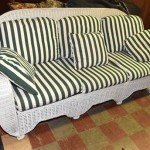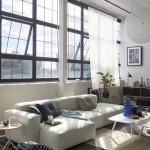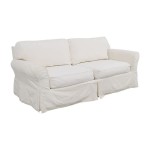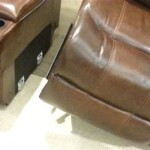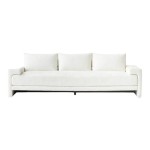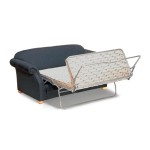Grey Sofa Decorating Ideas: A Comprehensive Guide
The grey sofa has become a staple in contemporary interior design, valued for its versatility and neutrality. It serves as a blank canvas, allowing for diverse decorating schemes and personal expressions. This article aims to provide a comprehensive exploration of decorating ideas centered around the grey sofa, covering color palettes, accessory selection, and style considerations.
Understanding the Versatility of Grey
Grey, often perceived as a singular color, exists across a spectrum of shades, ranging from near-white light grey to almost-black charcoal. Its versatility stems from its ability to complement a wide array of colors and textures. The specific shade of grey dictates the overall mood and aesthetic impact of the space. A lighter grey sofa, for example, can create an airy and open feel, particularly when paired with light walls and bright accents. Conversely, a darker grey sofa can introduce a sense of sophistication and depth, especially in larger rooms with ample natural light. The undertones of the grey shade are also important to consider. Some greys lean towards a cooler, bluish undertone, while others possess a warmer, beige undertone. These undertones must be considered when selecting complementary colours and accessories to ensure a cohesive design.
The texture of the grey sofa fabric also plays a vital role. A plush velvet sofa in grey exudes luxury and comfort, while a linen or cotton sofa in grey presents a more relaxed and casual aesthetic. Leather grey sofas offer durability and a modern edge. The choice of fabric should align with the desired style and the functional requirements of the space. For instance, a household with young children or pets might benefit from a more durable and stain-resistant fabric like microfiber or a treated cotton blend. The overall architectural style of the room must also be factored in. A minimalist apartment will likely benefit from a streamlined grey sofa with clean lines, while a more traditional home might accommodate a sofa with rolled arms and button-tufted detailing.
The placement of the grey sofa within the room influences its visual impact. In a smaller space, placing the sofa against a wall can maximize floor space. In larger rooms, the sofa can be used to define distinct zones, such as a seating area within a living room. Consider the natural light sources and architectural features of the room when determining the optimal placement. Placing the sofa near a window can enhance its visual appeal and create a welcoming atmosphere. Conversely, placing the sofa in a darker corner might necessitate the use of additional lighting to prevent it from appearing too somber.
Color Palette Considerations
The grey sofa provides a neutral backdrop for experimenting with various color palettes. A monochromatic scheme, utilizing different shades and textures of grey, can create a sophisticated and calming atmosphere. Accents in silver, chrome, or glass can further enhance this minimalist aesthetic. Introducing pops of color through accessories can prevent the monochromatic scheme from feeling overly sterile. Cushions, throws, and artwork in vibrant hues like mustard yellow, emerald green, or sapphire blue can add personality and visual interest.
Complementary color schemes, which utilize colors that are opposite each other on the color wheel, can create a visually dynamic and balanced space. Pairing a grey sofa with orange accents, for example, can create a striking contrast. The intensity of the chosen colors should be carefully considered to avoid overwhelming the space. Soft terracotta and burnt orange tones work well with darker greys, while brighter oranges are better suited for lighter grey sofas. A similar principle applies to other complementary pairs, such as blue and yellow. A navy blue rug or artwork can complement a warm grey sofa, while lemon yellow cushions can add a cheerful touch to a cooler grey sofa.
Analogous color schemes, which utilize colors that are adjacent to each other on the color wheel, can create a harmonious and soothing atmosphere. Pairing a grey sofa with shades of blue and green, for example, can evoke a sense of tranquility. This palette is particularly well-suited for bedrooms or living rooms where relaxation is the primary goal. The use of textures can add visual interest to an analogous color scheme. Combining smooth velvet cushions with chunky knit throws and textured rugs can create a layered and inviting space. Green plants can also be incorporated to enhance the natural and calming effect of the analogous color palette.
When selecting a color palette, consider the existing elements of the room, such as the wall color, flooring, and architectural details. The color palette should complement these existing elements to create a cohesive and harmonious design. Experimenting with different color swatches and visualizing the overall effect can help ensure a successful outcome. Online design tools and mood boards can be useful for exploring different color combinations and visualizing the final result before committing to any purchases.
Accessory Selection and Styling
Accessories play a crucial role in personalizing and enhancing the aesthetic appeal of a grey sofa. Cushions, throws, rugs, and artwork can be strategically used to introduce color, texture, and pattern to the space. The selection of accessories should be guided by the overall style and the desired mood.
Cushions are a versatile and cost-effective way to add color and pattern to a grey sofa. A mix of different sizes, shapes, and textures can create visual interest and depth. Consider using cushions with geometric patterns, floral prints, or abstract designs. The fabric of the cushions should complement the sofa fabric and the overall color palette. Velvet cushions can add a touch of luxury, while linen cushions can create a more relaxed and casual feel. Experimenting with different cushion arrangements can also impact the overall look. Arranging cushions symmetrically can create a sense of formality, while arranging them asymmetrically can add a more casual and relaxed vibe.
Throws can add warmth and texture to a grey sofa, particularly during colder months. Choose a throw that complements the color palette and adds a layer of visual interest. Chunky knit throws, faux fur throws, or patterned throws can all be effective options. Drape the throw casually over the back of the sofa or fold it neatly on one arm. A strategically placed throw can invite relaxation and create a cozy atmosphere.
Rugs can anchor the seating area and define the space around the grey sofa. The size, color, and pattern of the rug should be carefully considered to ensure a harmonious balance. A rug that is too small can make the space feel disjointed, while a rug that is too large can overwhelm the room. The color of the rug should complement the sofa and the overall color palette. A patterned rug can add visual interest and personality, while a solid-colored rug can create a more understated and sophisticated look. The texture of the rug can also impact the overall feel of the space. A plush shag rug can add warmth and comfort, while a flatweave rug can create a more modern and minimalist aesthetic.
Artwork can add personality and visual interest to the space above the grey sofa. Choose artwork that complements the color palette and reflects personal taste. A large statement piece can create a focal point, while a gallery wall featuring a collection of smaller pieces can add depth and character. The style of the artwork should align with the overall aesthetic of the room. Abstract art can add a modern and contemporary touch, while landscape paintings can evoke a sense of tranquility and nature. The framing of the artwork can also impact its visual appeal. Simple frames can create a clean and minimalist look, while ornate frames can add a touch of traditional elegance.
Lighting plays a crucial role in enhancing the ambiance and functionality of the space around the grey sofa. Floor lamps, table lamps, and overhead lighting can be used to create different moods and highlight specific features. A floor lamp placed next to the sofa can provide task lighting for reading or other activities. Table lamps placed on side tables can add a soft and ambient glow. Overhead lighting can provide general illumination for the entire room. The style of the lighting fixtures should complement the overall aesthetic of the room. Modern and minimalist lighting fixtures can enhance a contemporary space, while traditional and ornate lighting fixtures can add a touch of elegance to a classic interior. Consider using dimmer switches to adjust the lighting levels and create different moods.
Stylistic Considerations
The grey sofa can be adapted to suit a variety of interior design styles, from minimalist to bohemian. The key is to carefully select accessories and color palettes that align with the chosen style.
For a minimalist aesthetic, focus on clean lines, neutral colors, and simple accessories. A light grey sofa with minimal detailing can serve as the foundation for this style. Pair it with white walls, concrete floors, and a few carefully chosen accessories in shades of grey, black, and white. Avoid clutter and excessive ornamentation. The goal is to create a serene and uncluttered space that promotes a sense of calm and focus. Accents of natural materials, such as wood or stone, can add warmth and texture to the minimalist space.
For a bohemian aesthetic, embrace eclectic patterns, vibrant colors, and globally inspired accessories. A darker grey sofa can provide a grounding element for this style. Pair it with colorful cushions, patterned throws, and a mix of vintage and handcrafted items. Layer rugs and textiles to create a cozy and inviting atmosphere. Incorporate plants and natural elements to enhance the bohemian vibe. The goal is to create a space that is both comfortable and expressive, reflecting a personal and unique style.
For a traditional aesthetic, opt for a grey sofa with classic detailing, such as rolled arms and button-tufted upholstery. Pair it with rich fabrics, ornate accessories, and traditional artwork. Choose a color palette that includes warm neutrals, such as beige, cream, and gold. Incorporate antique furniture and decorative items to enhance the traditional feel. The goal is to create a space that is elegant and timeless, reflecting a sense of history and refinement.
For a modern aesthetic, choose a grey sofa with clean lines and a minimalist design. Pair it with contemporary furniture, abstract artwork, and geometric patterns. Opt for a color palette that includes cool neutrals, such as grey, white, and black, with pops of bright accent colors. Incorporate metal and glass elements to enhance the modern feel. The goal is to create a space that is sleek and stylish, reflecting a cutting-edge and sophisticated sensibility.
Ultimately, the key to successfully decorating with a grey sofa is to experiment with different ideas and find what works best for personal taste and lifestyle. The grey sofa serves as a versatile foundation upon which to build a unique and personalized living space.

Living Room Inspiration How To Style A Grey Sofa Scandinavian Pictures
Grey Living Room Ideas Inspiration Dfs

Grey Couch Living Room Ideas Decoholic

7 Ways To Spruce Up Your Living Room With A Grey Sofa

Grey Sofa For Living Room Design Ideas Designcafe

Fabulous Grey Living Room Designs Ideas And Accent Colors Page 25 Of 44 Womensays Com Women Blog Decor Gray Color Schemes Sofa

4 Ways To Decorate Around Your Charcoal Sofa Maria Killam

13 Ways To Work Your Room Around A Grey Sofa Houzz Ie

Grey Couch Living Room Ideas Decoholic

Grey Couch Living Room Ideas Organic Small Design
Related Posts

